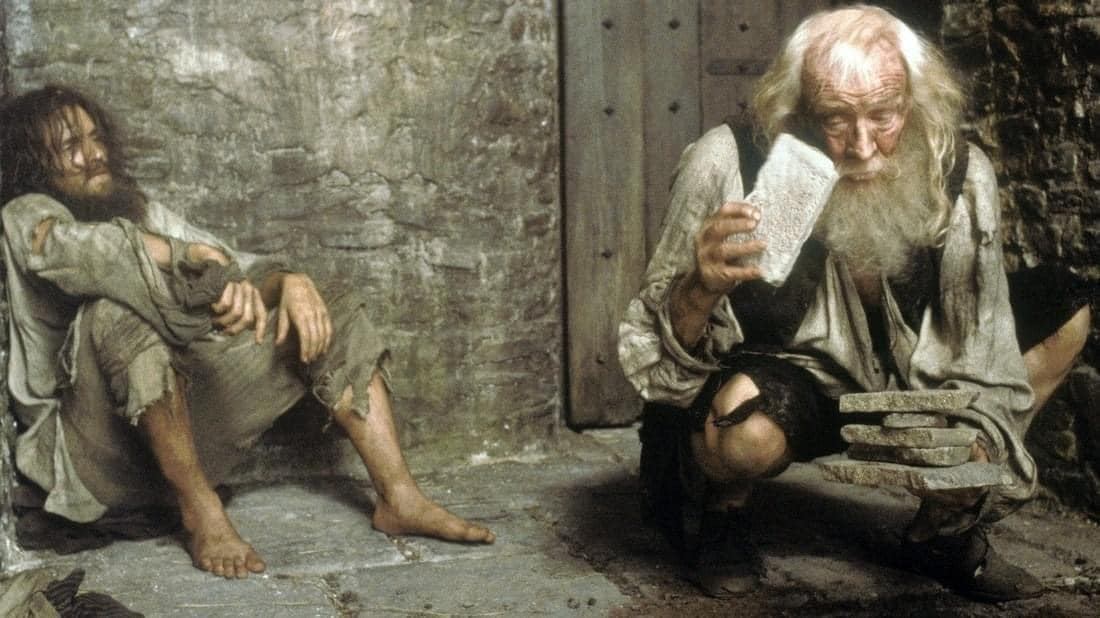🎬”The Count of Monte Cristo” (2002)🍿

The Count of Monte Cristo (2002), directed by Kevin Reynolds, is a thrilling adaptation of Alexandre Dumas’s classic novel, bringing the tale of betrayal, revenge, and redemption to life with a captivating blend of drama and action. Starring Jim Caviezel as the wronged Edmond Dantès and Guy Pearce as the treacherous Fernand Mondego, the film offers a fresh and engaging retelling of the iconic story.

The plot centers around Edmond Dantès, a young and promising sailor whose life is abruptly turned upside down when he is falsely accused of treason. At the start of the film, Dantès is an honorable and naive man, recently engaged to his beloved Mercedes (Dagmara Domińczyk) and on the brink of a successful career. However, his close friend Fernand Mondego, driven by envy and desire for Mercedes, conspires with other jealous associates to have Dantès imprisoned in the infamous Château d’If.
Dantès’ imprisonment is the beginning of his transformation. Initially devastated and confused by the betrayal, he spends years in the brutal conditions of the Château d’If. During this time, he meets Abbé Faria (Richard Harris), a fellow prisoner who becomes a mentor to Dantès. Faria educates him in various subjects, including the art of strategy and swordsmanship, and informs him of a hidden treasure on the island of Monte Cristo. Before his death, Faria provides Dantès with the means to escape and the knowledge of the treasure’s location.

Upon escaping the prison, Dantès retrieves the treasure and adopts the identity of the enigmatic Count of Monte Cristo. Armed with wealth, knowledge, and a burning desire for vengeance, he systematically plots the downfall of those who betrayed him, including Fernand, the chief architect of his suffering. As Dantès enacts his revenge, the film explores themes of justice, the corrupting influence of power, and the ultimate cost of vengeance.

Jim Caviezel delivers a compelling performance as Dantès, skillfully portraying the character’s evolution from a naive young man to a hardened and calculated avenger. Guy Pearce’s portrayal of Fernand Mondego is equally strong, embodying the arrogance and ruthlessness of a man driven by greed and jealousy. The chemistry between the two actors heightens the tension and drama, making their final confrontation all the more impactful.

The film’s production design and cinematography are noteworthy, capturing the grandeur and opulence of 19th-century France as well as the stark contrast of the grim Château d’If. The action sequences, particularly the sword fights, are well-choreographed and add excitement to the narrative without overshadowing the story’s emotional depth.
One of the strengths of this adaptation is its focus on the human aspects of the story, particularly Dantès’ internal struggle with his desire for revenge and the toll it takes on his soul. While the film takes some liberties with the source material, it remains true to the spirit of Dumas’s novel, emphasizing the themes of justice, redemption, and the complexities of human nature.
The Count of Monte Cristo (2002) is a satisfying adaptation that captures the essence of Dumas’s novel while delivering an accessible and entertaining cinematic experience. Its strong performances, engaging story, and thoughtful exploration of timeless themes make it a memorable and worthwhile film for both fans of the novel and newcomers alike.











